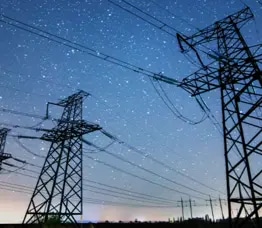Utility Pole Assessment powered by AI: Revolutionizing public safety and digital infrastructure

In an era where seamless communication and public safety are paramount, having reliable infrastructure is crucial. Utility poles play a pivotal role in modernizing communication networks and public safety systems. However, assessing these poles to ensure they can support new technologies, such as 5G antennas and public safety cameras, has traditionally been a labor-intensive process.
Nokia’s new Pole Assessment Service, a new feature of our Digital Site Twin portfolio, is set to change the utilities landscape. By creating a comprehensive digital replica of the utility infrastructure, this service offers a smarter, faster and more efficient way to assess utility poles, driving safety and operational efficiency across the industry. As we get into this blog, let’s explore how Nokia’s service is simplifying pole assessment and helping customers create a more secure and connected environment.
The need for effective pole assessment in public safety and communication
Traditional pole assessments require manual inspections, paperwork and extensive coordination, making the process slow, costly and prone to errors. Nokia’s new Pole Assessment Service addresses these challenges head-on by providing a digital, automated solution for rapid and accurate pole evaluations.
Nokia’s Pole Assessment Service offers a comprehensive approach to utility pole evaluation, leveraging advanced technologies like artificial intelligence (AI) and remote sensing. This allows for quicker deployment of communication networks and public safety technologies, ensuring they are supported by poles that meet all necessary standards.
Key Features of Nokia’s Pole Assessment service include:
-
AI-driven analysis: Uses AI and machine learning algorithms to analyze pole data, assessing factors such as structural integrity, material condition and load-bearing capacity, ensuring safe installation of public safety equipment.
-
Remote sensing: Employs LiDAR and high-resolution imagery to map exact pole locations and physical characteristics, reducing the need for physical inspections.
-
Real-time data access: Offers real-time access to pole data through a user-friendly digital platform, enabling quick, informed decisions for public safety officials, network operators and urban planners.
-
Automated compliance: Ensures installations meet safety standards and legal requirements, reducing non-compliance risks.
-
Scalability for large-scale deployments: Quickly assesses thousands of poles in a short timeframe, ideal for large-scale public safety and network expansions.
Benefits for public safety, communication and digital services
Nokia’s Pole Assessment Service provides numerous advantages for municipalities, telecommunications providers and public safety agencies aiming to strengthen their digital and communication infrastructure through:
-
Faster deployment of public safety equipment: Automating pole assessments accelerates utility pole approvals, enabling the rapid deployment of surveillance cameras and other public safety devices, enhancing city-wide security.
-
Enhanced communication networks: Ensures poles can support 5G, Wi-Fi and emergency communication systems, strengthening networks, especially during crises.
-
Cost efficiency: Reduces the need for physical inspections, reducing labor costs and project delays, and avoiding mistakes with unsuitable poles.
-
Improved safety and compliance: AI-driven checks verify pole integrity and compliance, lowering risks of accidents and legal issues.
-
Optimized infrastructure planning: Real-time data allows municipalities and network operators to make smart investment decisions, improving equipment placement and coverage.
Accelerating digitalization for public safety and communication
In today’s digital age, effective communication networks and public safety systems are non-negotiable. Nokia’s Pole Assessment Service plays a critical role in ensuring that utility poles can safely and reliably support them. Whether it’s installing new 5G antennas to improve emergency response communication or mounting surveillance cameras to enhance city security, Nokia’s service provides the insights and data needed to make these deployments fast and efficient.
By adopting this innovative Pole Assessment Solution, municipalities and telecommunication providers can expedite the rollout of essential public safety infrastructure and digital communication services. Nokia’s new service not only saves time and resources but also contributes to building safer, more connected communities —bridging the gap between traditional infrastructure and the demands of a modern, connected society.
Interested in learning more? Reach out to our subject matter experts or visit our Deployment Services webpage, or read our Nokia Site Solutions Brief for further information.




